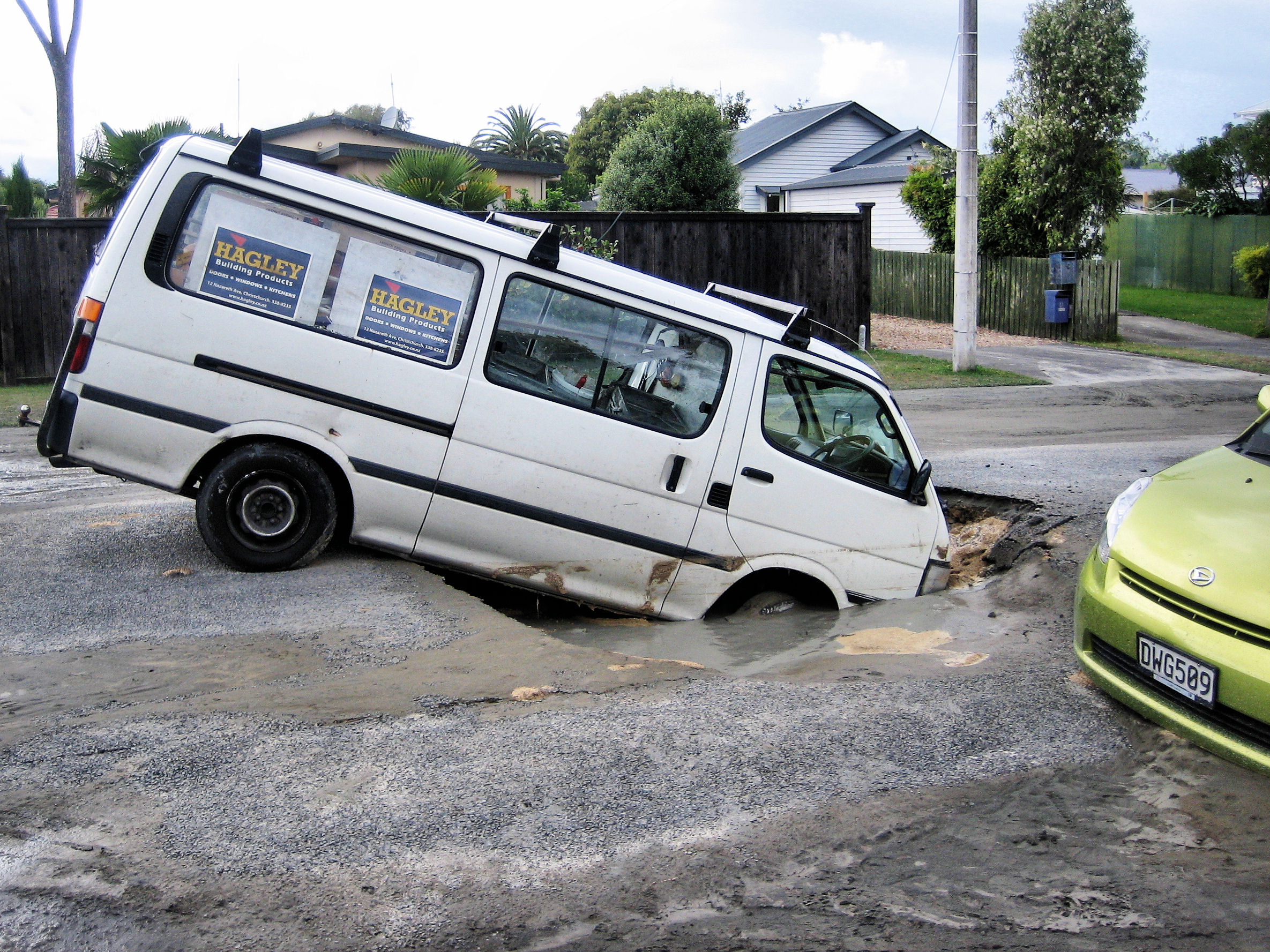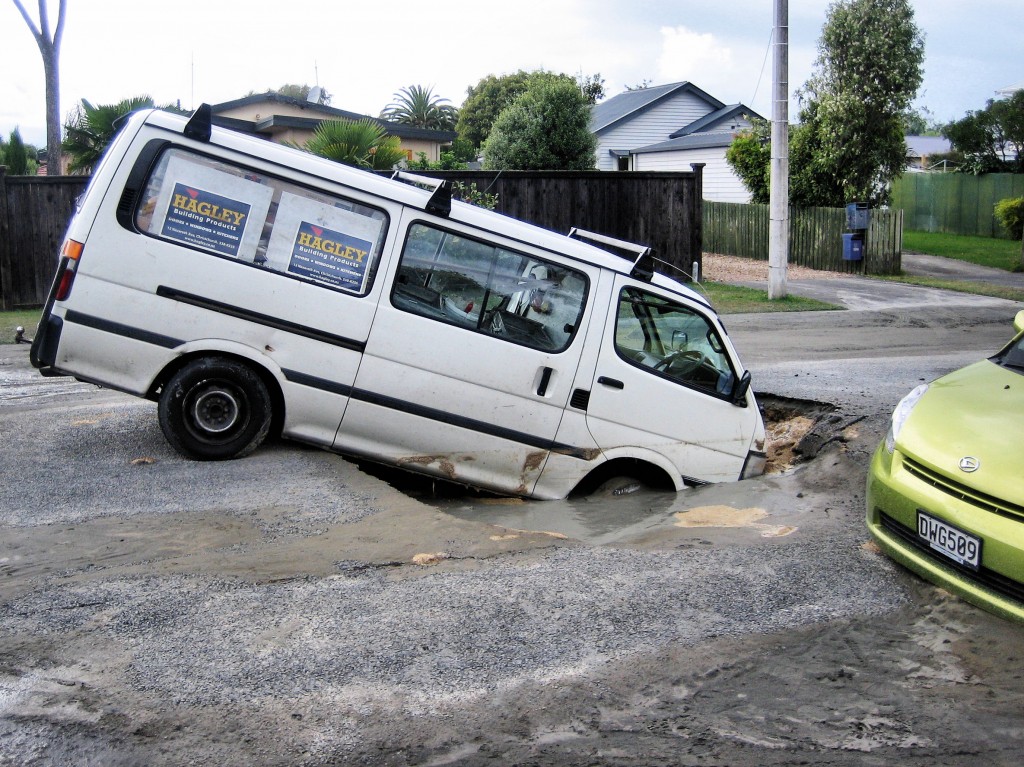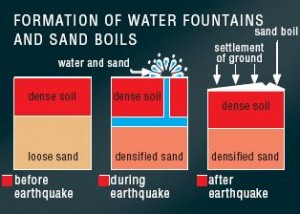Christchurch liquefaction could be the biggest in recent history

One of the interesting aspects of the earthquake’s impact on Christchurch has been the phenomenon of liquefaction, where soil and sand is compacted and water is forced to the surface. Liquefaction has been a feature of both Christchurch earthquakes, seen as tonnes of silt on the roads and sand volcanoes or sand boils on people’s lawns.



There have been many reports of sand volcanoes, water fountains and severe cracking of the ground – all the result of soil liquefaction. ECAN has released this useful graphic which shows the liquefaction potential in the Christchurch region.


Liquefaction is a phenomenon in which the strength and stiffness of a soil is reduced by earthquake shaking or other rapid loading. Liquefaction and related phenomena have been responsible for tremendous amounts of damage in historical earthquakes around the world.


Liquefaction occurs in saturated soils, that is, soils in which the space between individual particles is completely filled with water. This water exerts a pressure on the soil particles that influences how tightly the particles themselves are pressed together. Prior to an earthquake, the water pressure is relatively low.
However, earthquake shaking can cause the water pressure to increase to the point where the soil particles can readily move with respect to each other. Earthquake shaking often triggers this increase in water pressure, but construction related activities such as blasting can also cause an increase in water pressure.
What is soil liquefaction? (University of Wahington)
Report by NZ Ministry of Health: Liquifaction Silt Dust Risk Rated Low
Christchurch earthquake: liquefaction explained (Mandeno Musings)

[…] of shaking was greater than expected, particularly for a moderate-size earthquake, and the liquefaction-induced damage was extensive and severe,” said Erol Kalkan, a research structural engineer and manager of the […]